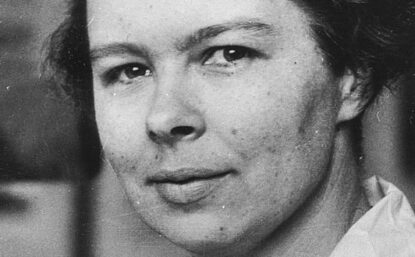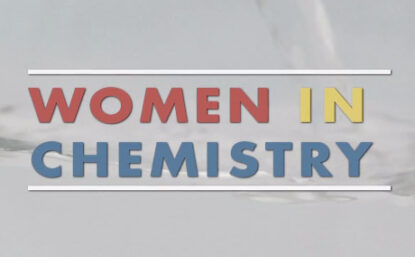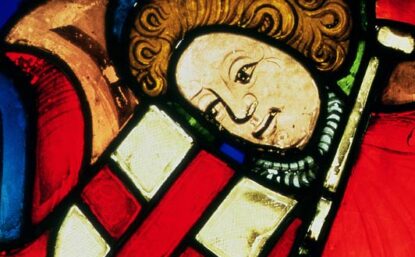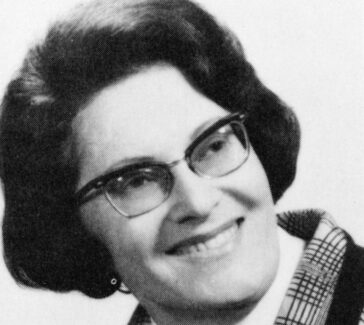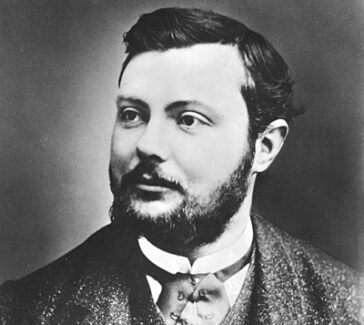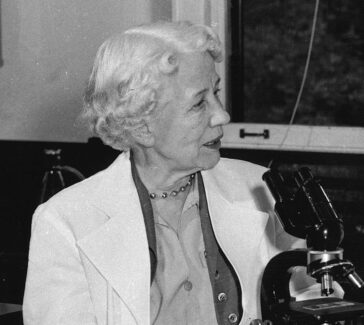Irving Langmuir and Katharine Burr Blodgett
Langmuir and Blodgett enjoyed one of the most fruitful relationships between a mentor and a younger scientist of all time.

Irving Langmuir (1881–1957) and Katharine Burr Blodgett (1898–1979) collaborated at the nanometer scale, studying films that were just one molecule thick, but their accomplishments were anything but minuscule. Langmuir received a Nobel Prize for his research.
GE and Light Bulbs
Irving Langmuir graduated from Columbia University’s School of Mines and received his doctorate under the physical chemist Walther Nernst at the University of Göttingen, Germany. After this education at the frontier of physical chemistry, he became bored after one year of teaching college. In 1909 he arrived at the recently established General Electric (GE) Research Laboratory in Schenectady, New York.

His first job was to solve the problems they were having with the new tungsten filament light bulbs. Langmuir concentrated on the basic principles on which the lamp operated, investigating the chemical reactions catalyzed by the hot tungsten filament. He rightly suggested filling the bulbs with nitrogen gas (and later argon gas) and twisting the filament into a spiral form to inhibit the vaporization of tungsten, important developments in the history of the incandescent light bulb.
Langmuir’s interest in fundamentals also involved him in the theory of chemical bonding in terms of electrons. In this regard Langmuir elaborated on Gilbert Newton Lewis’s ideas about shared-electron-pair bonding to give us, in a 1919 paper, the concept of the “covalent” bond.
Surface Chemistry
His studies of surface chemistry, however, are what earned him the Nobel Prize in Chemistry in 1932. Surface chemistry is the study of chemical forces at the interfaces between different substances, where so many biologically and technologically important reactions occur. Langmuir developed a new concept of adsorption—the adhesion of atoms or molecules to a surface. One important component of his theory was his discovery that, in adsorption, the layer of adsorbate (the atoms or molecules being accumulated at the surface of the adsorbent) is only one molecule thick—a monolayer, or monomolecular film.
The First Woman Scientist at GE
Katharine Blodgett was a native of Schenectady, and her father, who was tragically murdered shortly before she was born, had been head of the patent department at GE. After her father’s death the family moved to New York City, then France, then back to New York City. Blodgett earned a scholarship to Bryn Mawr College in Pennsylvania in 1913, at the age of 15, and near the end of her senior year she visited GE and met Langmuir. The elder scientist recommended that this young woman, who had done so well in physics and mathematics, broaden her scientific education. After obtaining a master’s degree in physics from the University of Chicago researching the adsorption capacities of charcoal in gas masks, she was hired in 1918 as Langmuir’s research assistant, becoming the first woman scientist ever to join the GE research lab. Langmuir was at that time developing a way to produce oily monomolecular films on water—the origins of the piece of apparatus now known as the Langmuir-Blodgett trough and part of the work that would earn him the Nobel Prize.
A Lifetime of Collaboration: Plasma and Films
After six years of collaboration Langmuir arranged for Blodgett to become the doctoral student of Ernest Rutherford at the Cavendish Laboratory, Cambridge University. She went on to earn Cambridge’s first doctoral degree in physics to be awarded to a woman. When Blodgett returned to GE, the two collaborators worked on more improvements to the light bulb. Their studies on electrical discharges in gases helped lay the foundations for “plasma” physics. A plasma is a substance similar to a gas in which a certain portion of the particles are electrically charged. Plasma is considered to be the fourth state of matter, different from solid, liquid, and gas.
They also returned to work on films, building up thicker films, monolayer by monolayer. In a practical application of this work Blodgett invented nonreflecting glass in 1939 by building up a 44-molecule-thick film of barium stearate, a type of soap, on glass. At that specific depth the reflection of the film neutralized the reflection of the glass since the troughs and crests of the waves were opposite of each other and canceled each other out. Further development of this concept by other researchers yielded hard-coating films that adhered permanently on the glass surface. Today virtually all lenses have nonreflective coatings to permit efficient passage of light.
During World War II the two worked together developing protective smoke screens and methods for deicing aircraft wings. But over time they worked more and more independently.
While never as lauded as Langmuir, Blodgett received numerous awards throughout her career, including the Francis Garvan Medal from the American Chemical Society.

